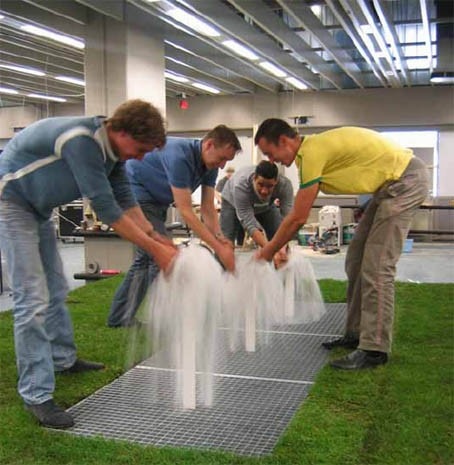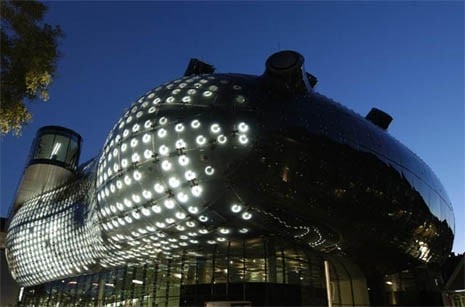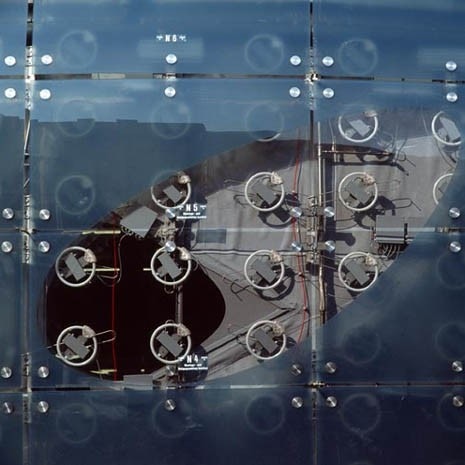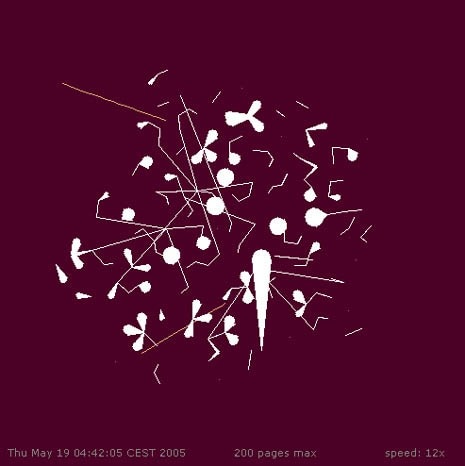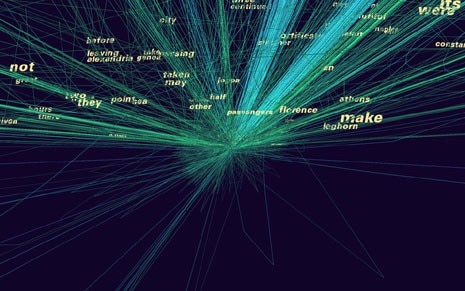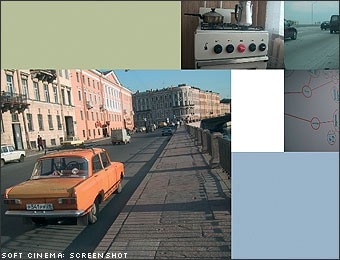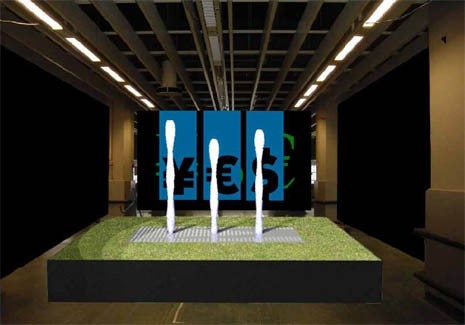The water output changes whenever there are variations in a stock quotation on the New York stock exchange or it is linked to the value of a certain currency on major world markets. A data fountain successfully conveys the flood of information we are subjected to every day. The way it works is quite simple: the fountain is linked to the Internet; it receives data on the progress of a share title or currency and translates them into variations in the height of the water jet. The first model of this kind was created at the Palo Alto Research Centre (now just PARC, the cradle of the most important innovations in the history of personal computers) and a new version was recently proposed by a group of Dutch artists and designers.
In this case, the form is generated literally by the data. Software logic – that of the rivers of data that permeate the net and are now increasingly spreading beyond it – is imposing its rules on the real world. This is the territory of “info-aesthetics”, to which Lev Manovich, author of “The Language of New Media” (MIT Press, 2001) devotes his new book. Manovich, already met by Domus in the past (…), visited Italy recently on a lecture tour and explained the cornerstones of the new theory.
“The discipline of info-aesthetics studies how the contemporary culture responds to the challenge of managing, storing and circulating growing quantities of data – explains the scholar – this leads to new aesthetic sensitivity and communication forms and strategies, from design to architecture, from the cinema to the design of human-computer interfacing”. A cascade of data in cyberspace, the domain of pure information, invades the material world and moulds it into new categories. Every object can now become an interface, have a screen and potentially open a window on a host of data. An example of this is the way media skins – building facades or entire surfaces – show video screenings, in some cases displaying constantly changing information. The Graz Art museum is clad with a methacrylate surface containing 930 small lights, like as many pixels, that are activated to generate continuous animation. “Here, information and form are working together to create interesting hybrid objects”, explains Manovich. This trend is symbolically well represented by Frank Gehry’s constructions, in which the form is like a snapshot of a constantly evolving fluid process.
This aesthetic can personify the spirit of the digital era, just as the Bauhaus interpreted |the logic underlying the industrial society by which “form follows function”. Many of those canons - the scholar explains in his essay “Avant-garde as software” – still influence the way we treat data, but the work of numerous architects and web designers who have for years been busy exploring the relationship between software and visual portrayals indicates the emergence of new trends. “Today, the concept of form is no longer static, defined once and for all; it varies on the basis of endless parameters – says Manovich. We increasingly find ourselves dealing with dynamic structures that are generated in real time. Think of surfing the Internet and the use of a search engine, in particular: the data we find have no hierarchy; they lie in a huge database and are organized according to our request”. The main problem is how to translate this wealth of information into forms that are compatible with our limited senses. “To resolve this problem, the mass culture simplifies and reduces but computers give us the opportunity to construct our own personal paths, with small variations”. It is the aesthetic of the database, by which the meaning is generated by the exploration and display of the possible links between the data. There is no longer a story, a consistent hierarchy; we construct the meaning. The computer provides us with endless combinations and troughs of true creativity form within the folds of this constant reconfiguration, with the generation of forms that are a pure reflection of the computer code yet express a new concept of “beauty” that can, as of yet, only be imagined.
Benjamin Fry’s creations at the MIT are an example of this. He is one of the most talented web designers and portrays data and visitor flows to a site as the growth and development of a flower, or organizes them in a 3D space that you can visit. Manovich himself proposes the exploration of a databank of film clips in his latest work: “Soft Cinema”, now available on DVD. The software puts the various clips filmed by him together to set rules. You are not watching a film, you are navigating through data. You test new relationships between images and between images and texts and gain an inkling of what info-aesthetics is and could be.
See also:
Stefania Garassini, The language of code at Linz 2003 (Features, 10.10.2003)
